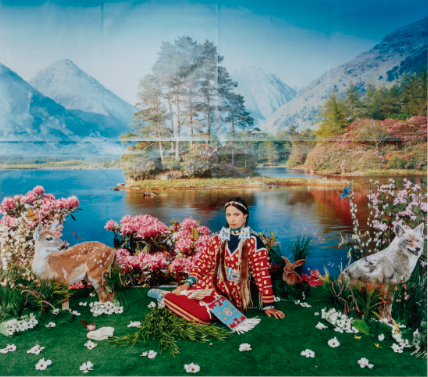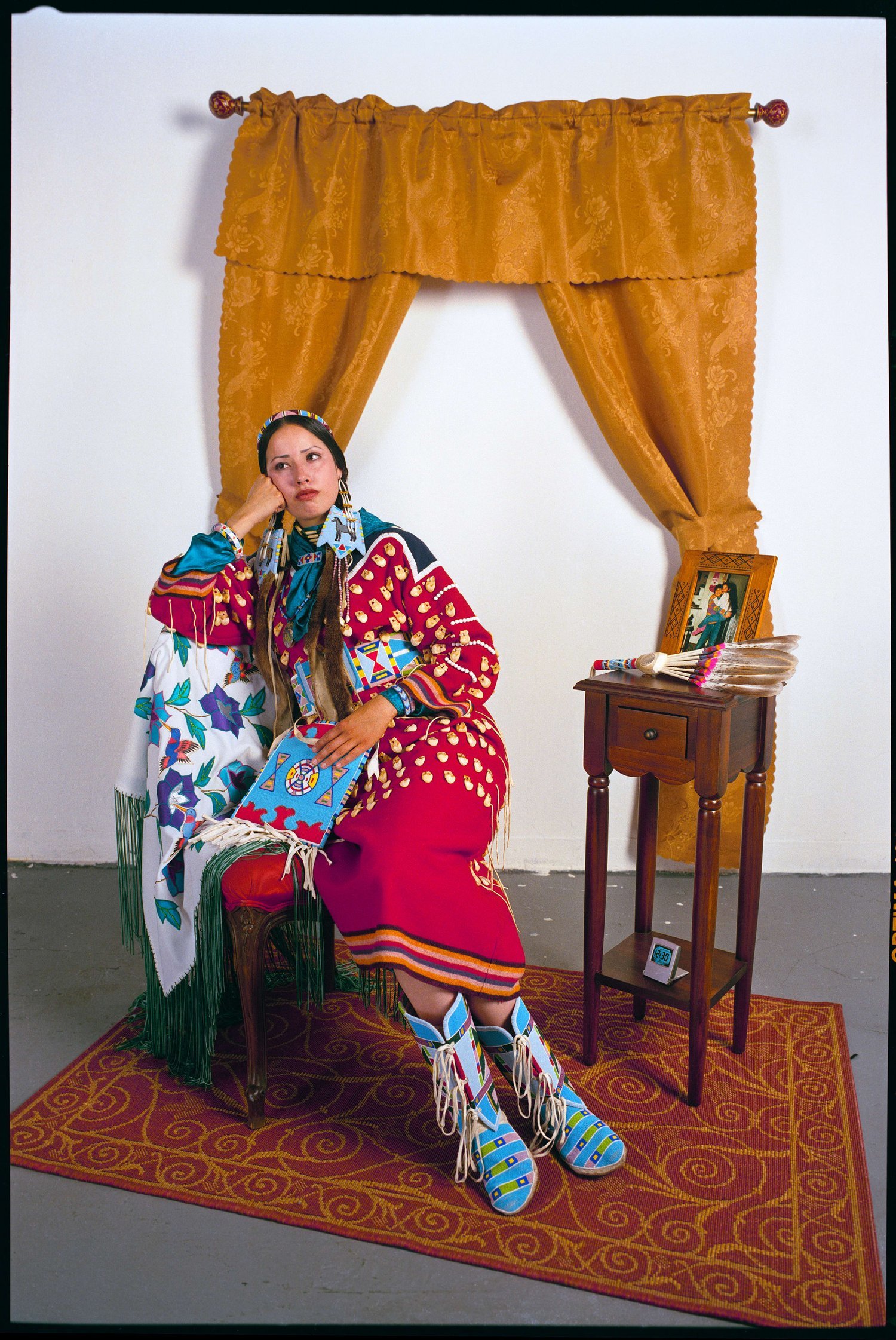A Scratch on the Earth | Wendy Red Star
Written by Nicole Miller
The Columbus Museum of Art is currently showcasing Wendy Red Star’s exhibition, A Scratch on the Earth, a comprehensive survey of Red Star’s stunning photography, textiles, and mixed media installations that explore the experience of the Apsáalooke (Crow) Tribe. Red Star historically contextualizes her indigenous roots, drawing on themes of colonialism, feminism, and otherness to investigate the oppressive policies and attitudes enforced by the U.S. government that contributed to the Crow people’s struggle to preserve their land and culture. The personal becomes political, and the political becomes personal as Red Star educates her audience through a combination of research-based photography practice and her own encounters and background, exploring the construction of her identity as a present-day member of the Crow Tribe.
In her self-portraiture series Four Seasons (2006), Red Star juxtaposes authentic, traditional dress with an exaggeratedly fake backdrop. Dressed in a ceremonial elk-tooth garb, she poses in the center of the frame against an artificial nature scene complete with faux flowers, astroturf, and inflatable animals. Through a satirical lens, Red Star critiques Native American stereotypes concerning Indigenous spirituality, emphasizing false narratives through the physical fabrication of material. Her piercing gaze is pointed as she confidently calls out cliches, challenging how Indigenous tribes are commonly portrayed as groups existing in antiquity. She embraces her representation of contemporary Crow people, highlighting the presence of Native American culture in today’s society.
Red Wing annotates historical photographs of Crow leaders in the series Diplomats of the Crow Nation, 1873 Crow Peace Delegation (2017). The black and white portraits, taken at the Peace Conference, have been digitally manipulated and meticulously traced over in red Sharpie to include omitted biographical details about the subjects. For example, in Group Portrait of Three Men, Mo-Mukh-Pi-Tche, Ella-Causs-Se (Thin Belly), and Pish-Ki-Ha-DiRi-Ky-Ish (One Who Leads The Old Dog), Red Wing documents not only the three men’s names but also notes their outfits and hairstyles, describing the various fabrics, fur, and jewelry donned by her ancestors. Red Star’s revisions augment the archival images, asserting and amplifying the identities of the Crow people, whose names and accomplishments were disregarded by the U.S. government.
Scratch on the Earth, the exhibition’s title, is a translation of the Apsáalooke (Crow) word “Annúkaxua,” which refers to a nineteenth-century federal government policy that aimed to keep the Crow Tribe on their reservation. The Crow people traveled from southern Montana to Washington D.C. to discuss territorial boundaries and were coerced to cede tribal lands to the government to construct a railroad. Red Wing writes in the margins of the Peace Delegation portraits to fill in the gaps in Crow and Indigenous peoples’ history, addressing the boundaries between racial and cultural borders and stressing the Apsáalooke’s resilience despite colonial oppression.











